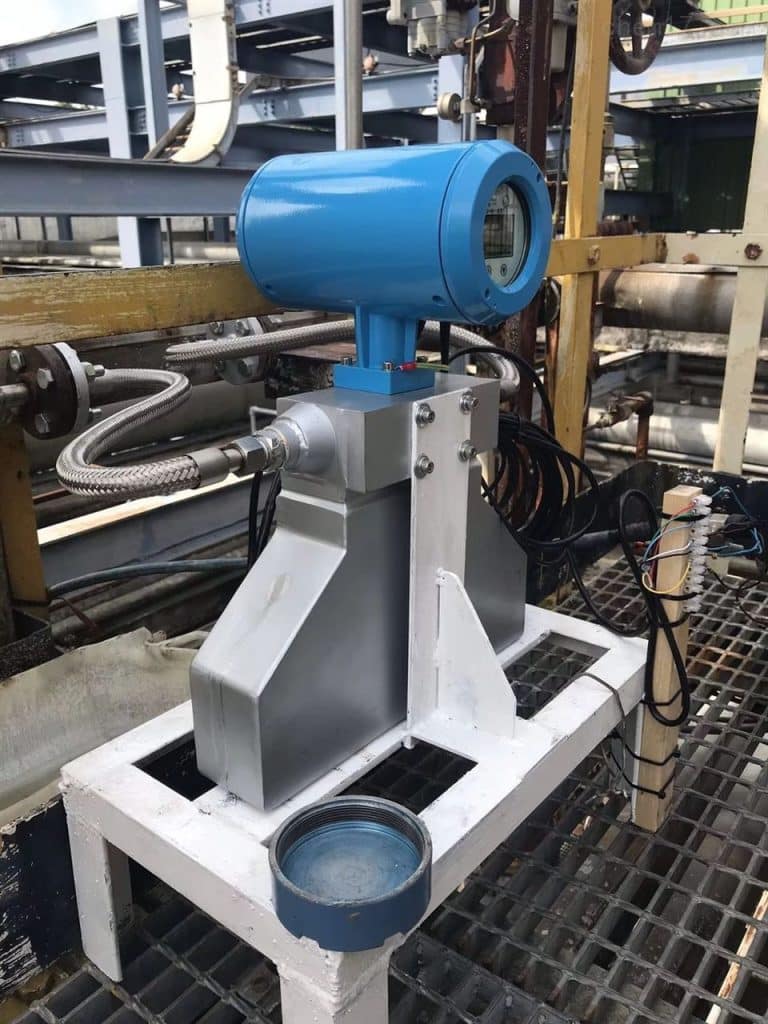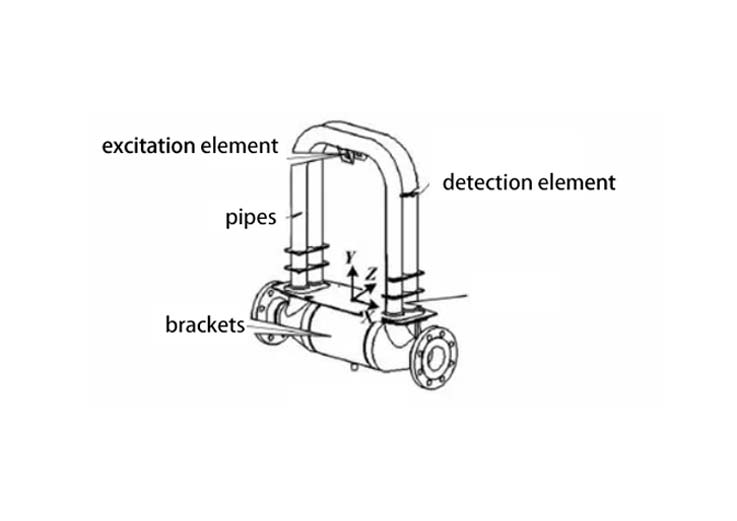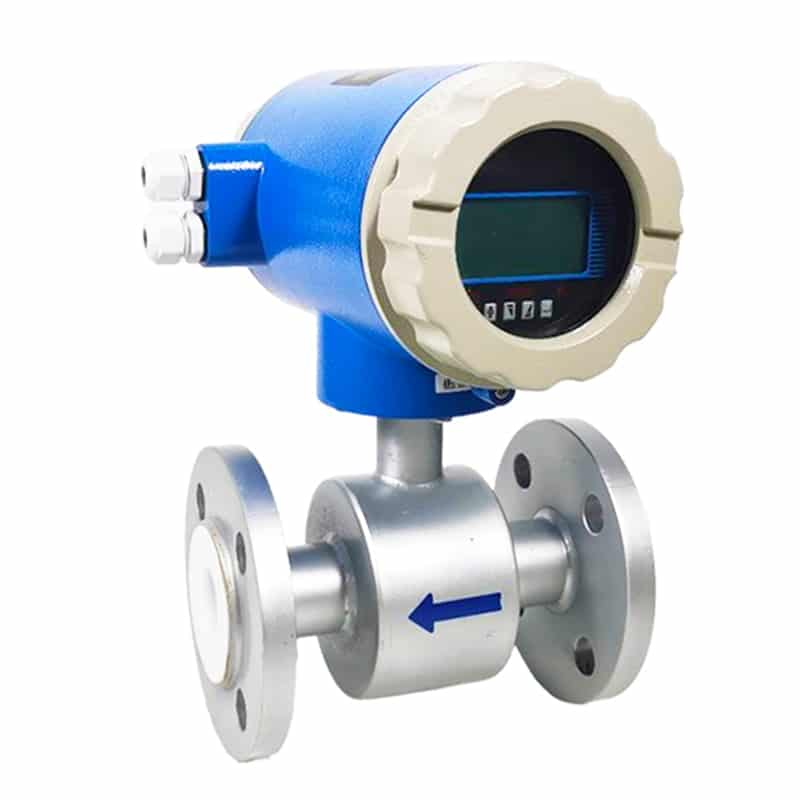In industry, flow measurement is crucial, involving accurately quantifying and monitoring media such as liquids, gases, or vapors. Flow measurement accuracy directly affects the control of industrial production processes, operational efficiency, and product quality assurance. To meet the demand for flow measurement in industrial production, a wide variety of flow meter devices have emerged on the market, the most common of which include coriolis flow meters and magnetic flow meters.

First of all, coriolis flow meters are relatively uncommon in the industrial market, but they are highly accurate and reliable flow measurement devices. Let’s take a look at coriolis flow meters.
Coriolis flow meter
Principle of the coriolis flow meter
Coriolis flow meters work on a scientific principle discovered by the scientist Gaspard-Gustave de Coriolis. When a liquid or gas passes through a rotating, curved pipe, an effect known as the coriolis force occurs. This force causes the pipe to twist, and the degree of twisting is proportional to the mass and velocity of the fluid. Coriolis flow meters utilize this effect to measure the mass flow of a fluid.
Calculation formula:

Where Q is the flow rate, k is the vibration frequency of the sensor, ρ is the density of the fluid, v is the velocity of the fluid, and dA is the cross-sectional area of the fluid passing through the sensor.
Note: ∫ is the integral symbol in mathematical notation, indicating that an integral operation is performed on a function. The coriolis flow meter formula ∫ represents the integration of the velocity of the fluid multiplied by the density over the cross-sectional area of the pipe to obtain the flow value.
Structural features of the coriolis flow meter
The internal structure of a coriolis flow meter typically consists of two side-by-side vibrating tubes, which are usually U- or S-shaped and fixed to a support structure. Fluid flows from the inlet of the meter through the vibrating tubes and out. The vibrating tubes are vibrated by suspension at a fixed point and the frequency of vibration is typically in the range of tens to hundreds of hertz. As the fluid passes through the tube, the relative motion of the tube occurs due to the coriolis effect, and this relative motion causes the shape of the tube to change.

In terms of external design, coriolis flow meters usually have a compact construction and can be easily mounted on pipes. The casing of the flow meter is usually made of corrosion-resistant materials to suit a wide range of environmental conditions and industrial applications. Fluid enters the flow meter through the inlet, then passes through the vibrating tube and leaves at the outlet. The external design of the flow meter is usually designed with ease of maintenance and cleaning in mind to ensure accurate measurements and consistent performance over time.
Advantages of the coriolis flow meter
The benefits of coriolis flow meters include highly accurate flow measurements for a wide range of fluids, including liquids, gases, and vapors. Measurement accuracies of 0.1% or better are typically achieved, making them the flow measurement device of choice for many industrial applications. In addition, coriolis flow meters have a wide measuring range and good stability, providing accurate measurements even under highly variable flow conditions.

However, there are some drawbacks to coriolis flow meters. The first is the high cost, which is typically higher for coriolis flow meters compared to other types of flow meters, such as magnetic flow meters, in terms of purchase and maintenance costs. In addition, coriolis flow meters are more sensitive to external vibrations and disturbances, which may affect their measurement accuracy. Therefore, special care needs to be taken during installation and use to minimize the effects of external vibration on the flow meter to ensure its accuracy and reliability.
Comparative analysis of coriolis flow meters and magnetic flow meters
Precision comparison:
The measurement accuracy of coriolis flow meters and magnetic flow meters may vary at different flow ranges. In general, coriolis flow meters have a relatively high measurement accuracy, often reaching 0.1% or better. This makes coriolis flow meters excel in applications that require high-accuracy flow measurements, such as precision chemicals, food, and pharmaceuticals.
Magnetic flow meters, on the other hand, typically have a measurement accuracy of between 1% and 2%, which may be slightly less than coriolis flow meters, but still meet the needs of many industrial applications. Especially when dealing with liquid media, magnetic flow meters are usually able to provide stable and reliable flow measurements.
Therefore, when selecting a suitable flow meter, the specific needs of the application and the requirements for measurement accuracy need to be taken into account. For applications requiring highly accurate measurements, coriolis flow meters may be more appropriate, while for general industrial processes, magnetic flow meters may be a more cost-effective option.
AYT Digital Liquid Magnetic Flow Meter, as a product of long-term experience in the field of flow meters, has the function of fast response and elimination of output noise, and its design and quality control system ensure the high accuracy and reliability of the product.

Applicable scenarios:
Chemical industry:
- Coriolis flow meters: are suitable for chemical processes where high accuracy, stability, and reliability are required. Their ability to accurately measure density and concentration variations makes them excellent in flow measurement of liquids and gases, as well as in batching and control processes in chemical production.
- Magnetic flow meter: excellent performance in handling corrosive media and high temperature and pressure conditions. Magnetic flow meters have good corrosion resistance and reliability and are suitable for flow measurement of acidic and alkaline liquids and corrosive solutions in chemical processes.
Food processing field:
- Coriolis flow meter: Due to its high accuracy and reliability, it is commonly used in food processing for accurate control of fluid composition and ingredients, such as the flow measurement of fruit juice, alcohol, soy sauce, and so on.
- Magnetic flow meters: are used in the food industry for flow measurement of liquid and semi-solid foodstuffs, such as milk, beverages, edible oils, and so on. Magnetic flow meters have the advantages of contactless measurement and easy cleaning, which help to ensure the hygiene and safety of food processing.
Cost comparisons:
Purchasing costs:
- Coriolis flow meters: are usually more expensive than magnetic flow meters due to their complex construction and high accuracy. The cost of purchasing a set of coriolis flow meters is usually higher.
- Magnetic flow meters: magnetic flow meters are less expensive to purchase than coriolis flow meters. They are relatively simple in construction, less expensive to manufacture, and therefore relatively inexpensive.
Maintenance costs:
- Coriolis flow meters: have higher maintenance costs due to their more complex construction, which requires more elaborate manufacturing and maintenance. For example, regular calibration, cleaning, and checking of the meter’s operational status are required, all of which require additional labor and time costs.
- Magnetic flow meter: Comparatively speaking, magnetic flow meter maintenance costs are lower. Its structure is simple, and usually only needs regular cleaning and calibration to maintain normal operation, maintenance is less difficult and less costly.
Summary
Coriolis flow meters and magnetic flow meters have their advantages and disadvantages, and choosing the right one depends on the actual needs and budget. coriolis flow meters offer high accuracy and stability and are suitable for scenarios requiring high flow accuracy, but at a higher cost; while magnetic flow meters are inexpensive, and suitable for measuring liquids at high flow rates, but with relatively low accuracy. Considering the advantages, disadvantages, and application scenarios of each, it can provide more accurate and economical flow measurement solutions for industrial production.
Apure offers flow measurement instruments as well as water quality monitoring analyzers, level measurement instruments, pressure measurement instruments, and temperature measurement instruments. For further information, please contact us.
